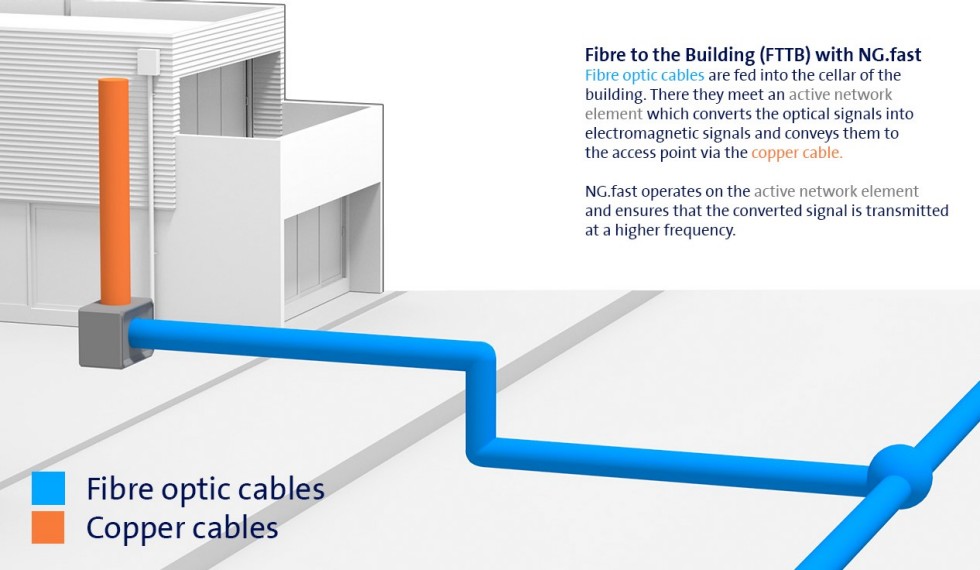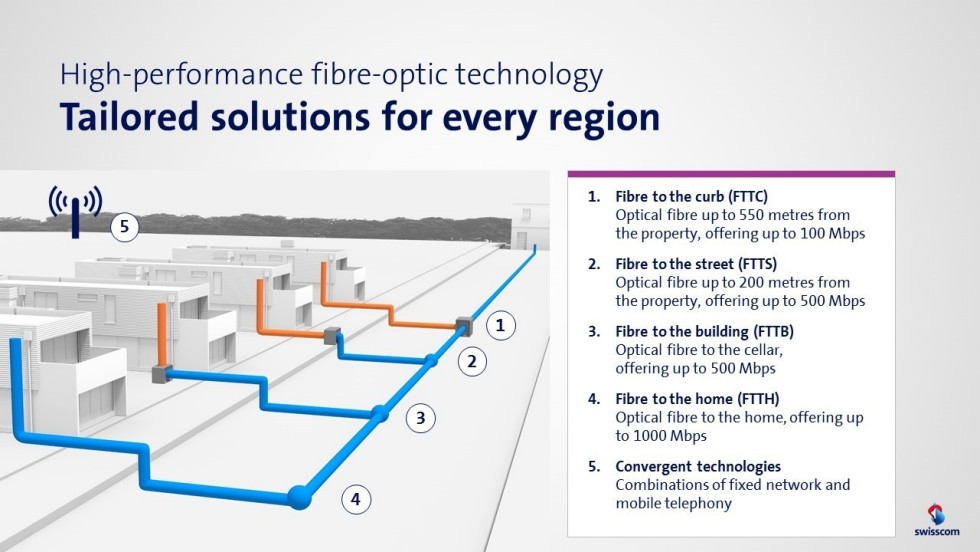Swisscom info and facts
NG.fast – Swisscom tests innovation for the ultra-fast broadband network
Huawei Switzerland and Swisscom are collaborating to push the limits of data transfer on short copper cables combined with fibre optics. Since August 2017, Swisscom has been one of the first ICT companies in the world to test Multiline NG.fast with vectoring in its laboratory, thanks to an innovation partnership that is breaking previously unimaginable ground. The upshot is that bandwidths of up to 5 Gbit/s are now just around the corner.

